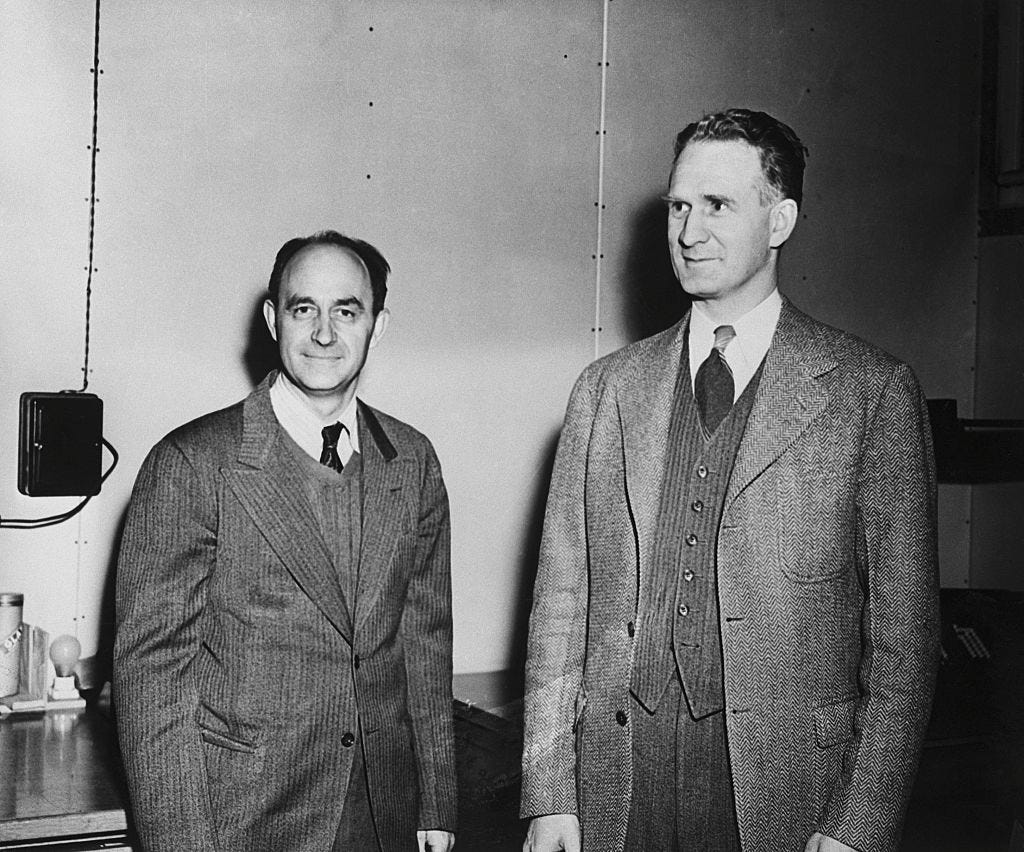Chain Reaction
The great nuclear restart goes continental.
“The obscure we see eventually. The completely obvious, it seems, takes longer.”—Edward R. Murrow
On December 10, 1906, Walter Henry Zinn was born in Berlin, Ontario, Canada, which is not actually three different places but a city that now goes by the name of Kitchener. The second son of Maria Anna Stoskopf and John Zinn, he would play a profoundly important role in shaping both the outcome of World War II and the development of the modern civilian energy sector.
After completing his undergraduate and master’s degrees at Queen’s University in Canada, Zinn earned his PhD from Columbia University in 1934. Eventually, he was recruited into the Manhattan Project by famed University of Chicago physicist Enrico Fermi, who became known as "the architect of the nuclear age.” Under Fermi, Zinn played a central role in the design and construction of Chicago Pile-1, the first nuclear reactor to achieve criticality. On December 2, 1942, it was Zinn who manually removed a cadmium-coated control rod from the reactor’s core, initiating the chain reaction.
After the war, Zinn became the first director of Argonne National Laboratory, which became a primary hub for nuclear reactor research and development. While at Argonne, Zinn supervised the building of the Experimental Breeder Reactor-1 (EBR-1) in Idaho, which in 1951 became the first nuclear reactor to generate usable electricity. The four 200-watt light bulbs it initially powered symbolized the dawn of civilian nuclear energy and its magnificent potential.
Between 1965 and 2023, according to the Statistical Review of World Energy, humans produced an incredible 104 petawatt-hours of clean electricity from the world’s fleet of nuclear reactors, enough to satisfy California’s entire current electricity demand for 370 years. By any objective measure, nuclear energy is so stable, safe, and inherently affordable when built under sane regulatory regimes that aliens observing Earth must wonder why the great majority of humanity’s energy isn’t sourced from it.
That the staggering contributions of the most important Berliner you’ve probably never heard of have been so flippantly cast aside by the engineering powerhouse known as Germany is the height of irony. Germany’s abandonment of its world-leading nuclear reactor fleet is one of the greatest own-goals of modern history—a campaign that caused a cascading series of similarly self-loathing countries to jump on their own swords. After years of crushing deindustrialization that can be directly traced to the country’s energy policies, it seems Germany may finally be reversing course:
“The new German government has signalled to France it will no longer object to treating nuclear power on a par with renewable energy in EU legislation, French officials said, confirming a published report. The EU's two largest economies have long been at loggerheads over whether to promote atomic power to achieve CO2 emissions targets, delaying policymaking on tackling climate change in the bloc.
France, which gets around 70% of its energy from atomic power, is nuclear energy's main champion in Europe. Germany, which has phased out its nuclear plants, has viewed it as low-carbon but not renewable. However, new German Chancellor Friedrich Merz, who has called exiting nuclear energy a mistake, has promised a reset in relations with France. Berlin was also becoming increasingly isolated, with many European countries planning to revive nuclear power to replace gas flows from Russia.”
The German move is but one in a dizzying array of positive nuclear energy developments emerging across Europe. In the past several months, country after country has reconsidered its attitude toward the technology, perhaps setting the stage for the beleaguered continent to mark a bottom in sanity and pivot back towards physics. Let’s catalog the developments and speculate about Europe’s prospects.



